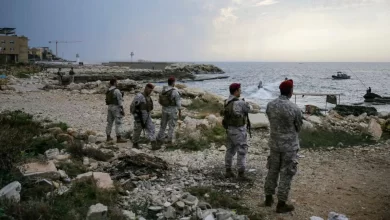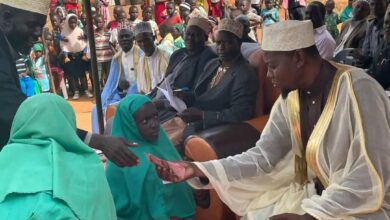BusinessInternational NewsLocal News
Uganda, Kenya Launch US$ 137 Million Angololo Project to Boost Food Security, Energy
Kenya's Cabinet Secretary for Water, Sanitation and Irrigation, Eng. Erick Muriithi (L) with Hon. Anywar Beatrice Atim (R) after signing the bilateral agreement between Kenya and Uganda

Busia, Kenya — Uganda and Kenya have officially launched the $137 million Angololo Water Resources Development Project, a landmark transboundary initiative designed to enhance food and water security, promote clean energy, and deepen regional integration across the Sio-Malaba-Malakisi (SMM) River sub-basin.
The agreement marking the start of the project’s implementation phase was signed Tuesday at Busia Breeze Hotel, Busia County, Kenya. The initiative, jointly developed under the Nile Equatorial Lakes Subsidiary Action Programme (NELSAP) of the Nile Basin Initiative (NBI), will benefit over 300,000 people in Kenya’s Busia and Bungoma counties and Uganda’s Tororo, Namisindwa, and Manafwa districts.
Funded by the African Development Bank (AfDB) and the NEPAD-IPPF Special Fund, the project is in line with Kenya’s Vision 2030 and Uganda’s Vision 2040 development agendas. It includes infrastructure investments of $132.15 million and a $4.77 million allocation for land acquisition and resettlement—$2.48 million for Uganda and $2.29 million for Kenya.
Uganda’s delegation was led by Hon. Beatrice Anywar Atim, Minister of State for Environment, while Kenya was represented by Cabinet Secretary for Water, Sanitation and Irrigation, Eng. Erick Muriithi. Also present were senior officials from both countries, representatives from AfDB, AUDA-NEPAD, IUCN, World Bank, ALSF, and the Nile Secretariat.
“This project is here to warm our cordial relationship between Uganda and Kenya,” said Hon. Anywar. “It is a very powerful symbol of transboundary cooperation and economic integration. Our people will enjoy the full benefits of irrigation, fisheries, employment—which all point to one thing: homemade solutions.”
She emphasized that President Yoweri Museveni fully supports the project, describing it as a key pillar in promoting trade and regional peacebuilding. Anywar also noted that the initiative aligns with multiple United Nations Sustainable Development Goals (SDGs), particularly those on poverty eradication, hunger, clean water, affordable energy, and climate action.
Kenya’s Cabinet Secretary Eng. Muriithi described the project as a timely solution to food insecurity and climate-induced disasters. “It will address flooding through improved watershed management and promote aquaculture to enhance nutritional outcomes and rural incomes.”
Key features of the Angololo Project include a 40-metre-high dam with a 31.6 million cubic metre storage capacity, a 1.3 MW mini-hydropower plant (with potential for an additional 20MW via solar pontoons), a 4,000-hectare irrigation scheme, a water supply network for over 270,000 people, and a fisheries and aquaculture program. It also provides for restoration of 30 percent of the degraded 447 km² watershed and flood protection for downstream communities.
Dr. Callist Tindimugaya, representing Uganda’s Ministry of Water and Environment, hailed the political will from both countries, noting that it created an enabling environment for technical teams. “The Nile Basin Investment Programme helped identify and mature this project. Trust between the two nations was essential.”
NELSAP Regional Coordinator Dr. Isaac Alukwe added, “This project is not just about infrastructure; it’s about people. It will empower communities, unlock economic potential, and build resilience in the face of climate and development challenges.”
According to NELSAP, farmers will access irrigated land and boost yields, households will benefit from reliable clean water, and youth will gain employment opportunities in agriculture, aquaculture, construction, and support services.
Hon. John Musila, MP for Bubulo East in Uganda’s Namisindwa District, described the project as “a blood vein” in the region’s development. Known for his Rastafarian expressions, he closed his speech with “bless,” “up up,” and “irie”—symbols of unity and optimism.




